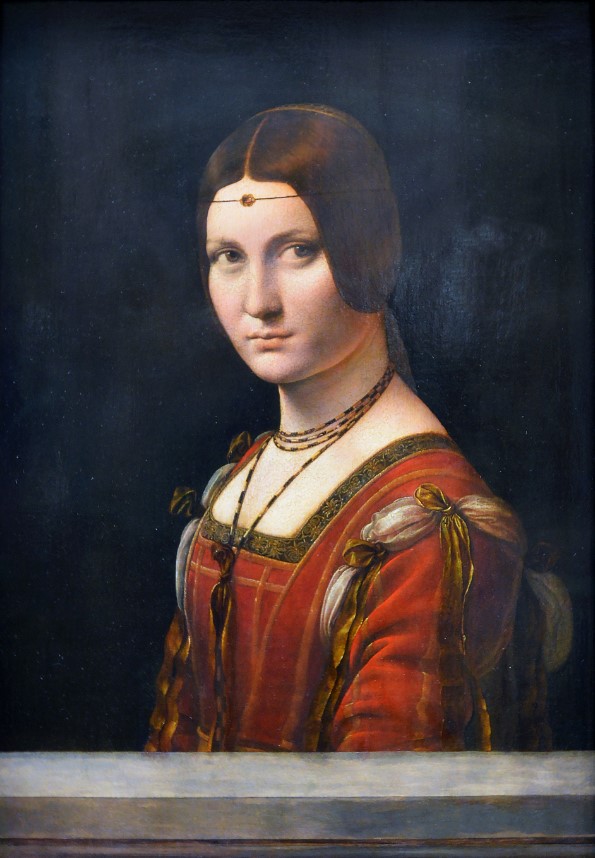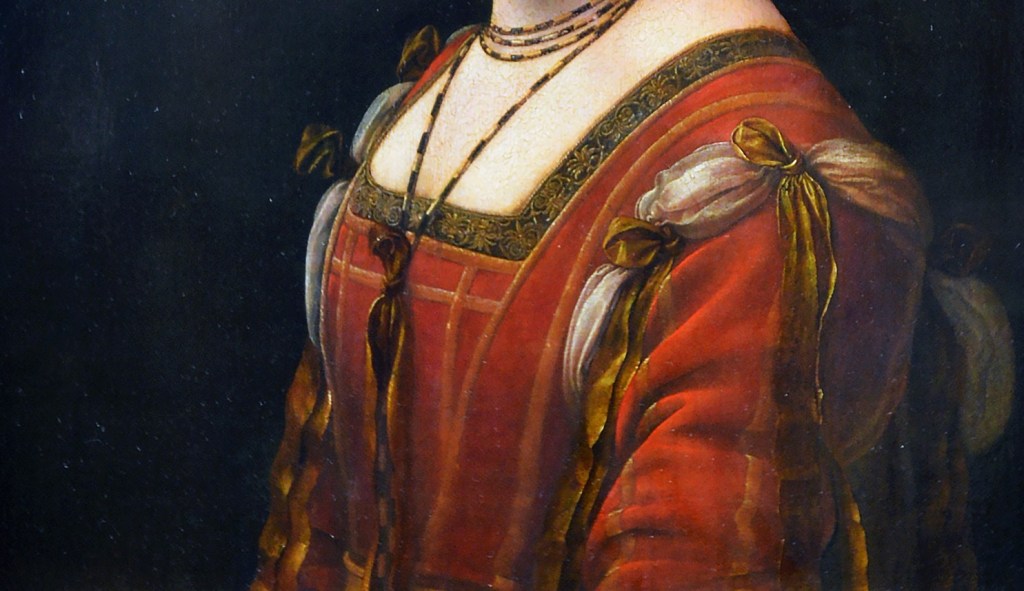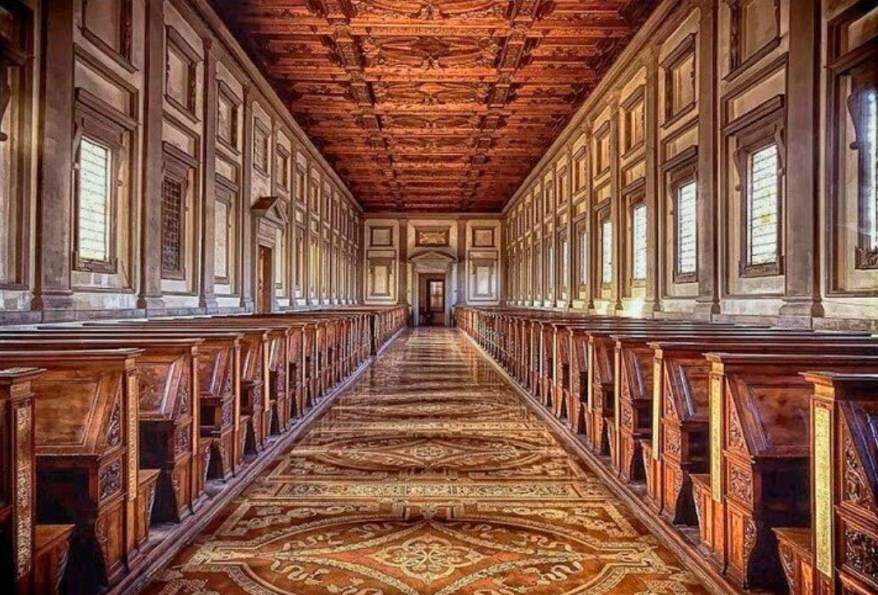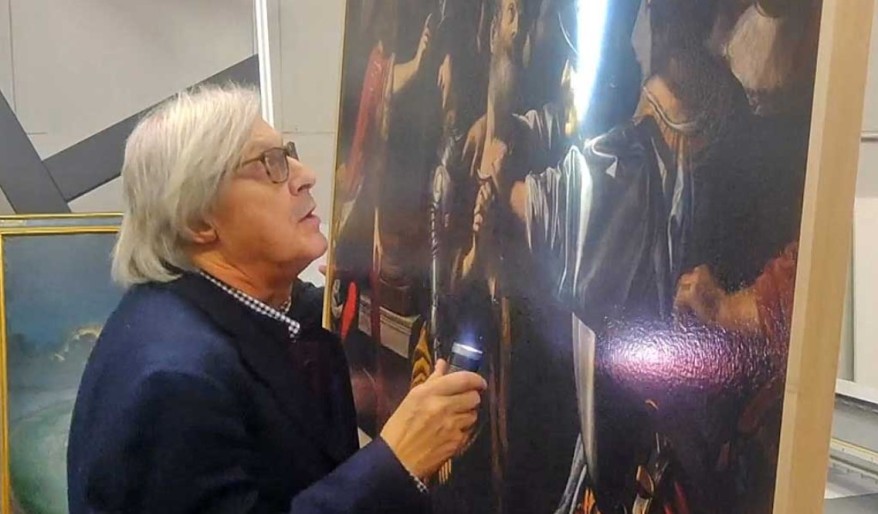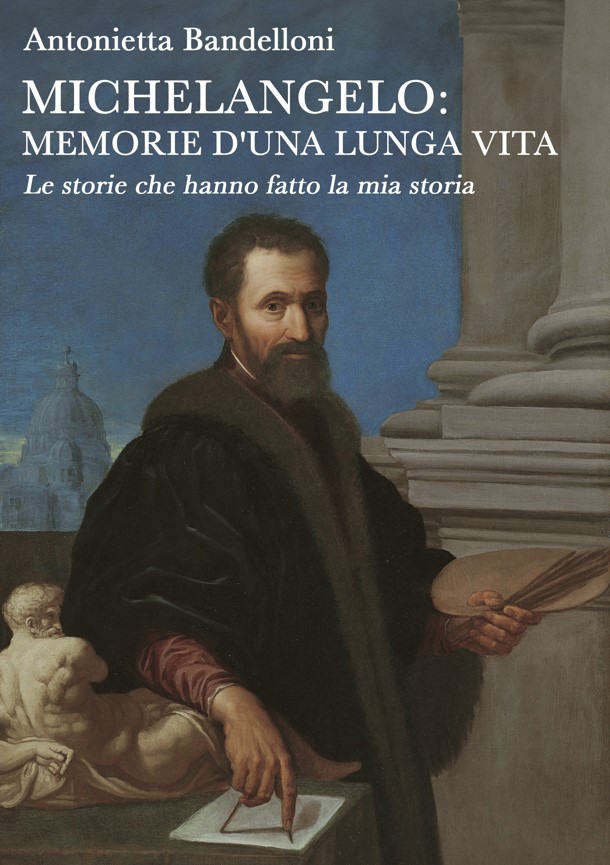Il Dipinto del giorno: la Belle Ferronière di Leonardo da Vinci
Il dipinto del giorno che vi propongo oggi è la Belle Ferronière di Leonardo da Vinci, dipinta a olio su tavola di noce fra il 1490 e il 1497, custodita presso il Museo del Louvre di Parigi.
La giovane è ritratta dal vero a mezzo busto e fra lo spettatore e la sua presenza, Leonardo interpose un parapetto in stile fiammingo.
Mentre il busto risulta voltato verso sinistra, il capo è in posizione frontale e sembra che lo sguardo della donna sia attratto da qualcosa in particolare.
La Belle Ferronière indossa un abito tipico dell’epoca in cui visse con una scollatura di forma rettangolare secondo la moda del tempo. Ha il capo cinto da un sottile nastro di pelle decorato con un gioiello con un rubino al centro.
La storia della Belle Ferronière
Ricostruire la storia di questo capolavoro non è semplice e non sono poche le contraddizioni che esistono.
Si presume che l’opera si trovasse già nel 1542 nell’Appartment des bains del re Francesco I a Fontainbleau, assieme ad altre opere di Leonardo come la Monna Lisa, la Vergine delle rocce e il San Giovanni Battista.
L’elevata qualità del dipinto, le affinità tecniche che esistono con le opere di Leonardo da Vinci e addirittura le tavole dell’opera che derivano dallo stesso tronco d’albero adoperato per il Ritratto di Cecilia Gallerani, escludono qualsiasi dubbio che l’opera possa essere di altra mano.
La prima testimonianza certa che si ha di quest’opera risale al 1642, quando padre Dan vide l’opera nella collezione reale di Fontainbleau.
Verso la fine del Seicento, la Belle Ferronière entrò a far parte della collezione di Luigi XIV e fu spostata prima a Parigi e poi a Versailles, dove rimase fino al 1784 per poi entrare nelle collezioni del Louvre.
Ma chi era la dama ritratta da Leonardo?
L’identità della dama ritratta dall’artista rimane tutt’oggi sconosciuta ma ci sono diverse teorie in merito.
Amoretti agli inizi dell’Ottocento ipotizzò si potesse trattare di Lucrezia Crivelli, amante di Ludovico il Moro mentre c’è chi pensa possa essere Cecilia Gallerani ritratta un’altra volta a distanza di pochi anni o addirittura Beatrice d’Este.
Perchè viene chiamata la Belle Ferronière?
L’appellativo della giovane come la Belle Ferronière deriva probabilmente dal monile che porta sulla fronte chiamato per l’appunto ferronière e molto in voga fra le ragazze milanesi dell’epoca.
Per il momento il sempre vostro Michelangelo Buonarroti vi saluta dandovi appuntamento ai prossimi post e sui social.
Painting of the day: Leonardo da Vinci’s Belle Ferronière
The painting of the day that I propose to you today is the Belle Ferronière by Leonardo da Vinci, painted in oil on walnut panel between 1490 and 1497, kept at the Louvre Museum in Paris.
The young woman is portrayed from life in a half-length portrait and between the viewer and her presence, Leonardo interposed a Flemish-style parapet. While the bust is turned to the left, her head is in a frontal position and it seems that the woman’s gaze is attracted by something in particular.
La Belle Ferronière wears a dress typical of the era in which she lived with a rectangular neckline according to the fashion of the time. Her head is surrounded by a thin leather ribbon decorated with a jewel with a ruby in the center of her.
The history of the Belle Ferronière
Reconstructing the history of this masterpiece is not easy and there are many contradictions that exist. It is assumed that the work was already in 1542 in the Apartment des bains of King Francis I in Fontainbleau, together with other works by Leonardo such as the Mona Lisa, the Virgin of the Rocks and Saint John the Baptist.
The high quality of the painting, the technical affinities that exist with the works of Leonardo da Vinci and even the panels of the work which derive from the same tree trunk used for the Portrait of Cecilia Gallerani, exclude any doubt that the work could be of another hand.
The first certain testimony we have of this work dates back to 1642, when Father Dan saw the work in the royal collection of Fontainbleau.
Towards the end of the seventeenth century, the Belle Ferronière became part of Louis XIV’s collection and was moved first to Paris and then to Versailles, where it remained until 1784.
But who was the lady portrayed by Leonardo?
The identity of the lady portrayed by the artist remains unknown today but there are several theories on the matter. At the beginning of the 19th century, Amoretti hypothesized that it could be Lucrezia Crivelli, lover of Ludovico il Moro, while there are those who hypothesize that she could be Cecilia Gallerani portrayed again a few years later or Beatrice d’Este.
Why is she called la Belle Ferronière?
The young girl’s nickname as the Belle Ferronière probably derives from the necklace she wears on her forehead called ferronière and very popular among Milanese girls of the time.
For the moment, yours truly Michelangelo Buonarroti greets you and will meet you in future posts and on social media.

Sostienici – Support Us
Se questo blog ti piace e ti appassiona, puoi aiutarci a farlo crescere sempre più sostenendoci in modo concreto condividendo i post, seguendo le pagine social e con un contributo che ci aiuta ad andare avanti con il nostro lavoro di divulgazione. . ENGLISH: If you like and are passionate about this blog, you can help us make it grow more and more by supporting us in a concrete way by sharing posts, following social pages and with a contribution that helps us to move forward with our dissemination work.
8,00 €
-
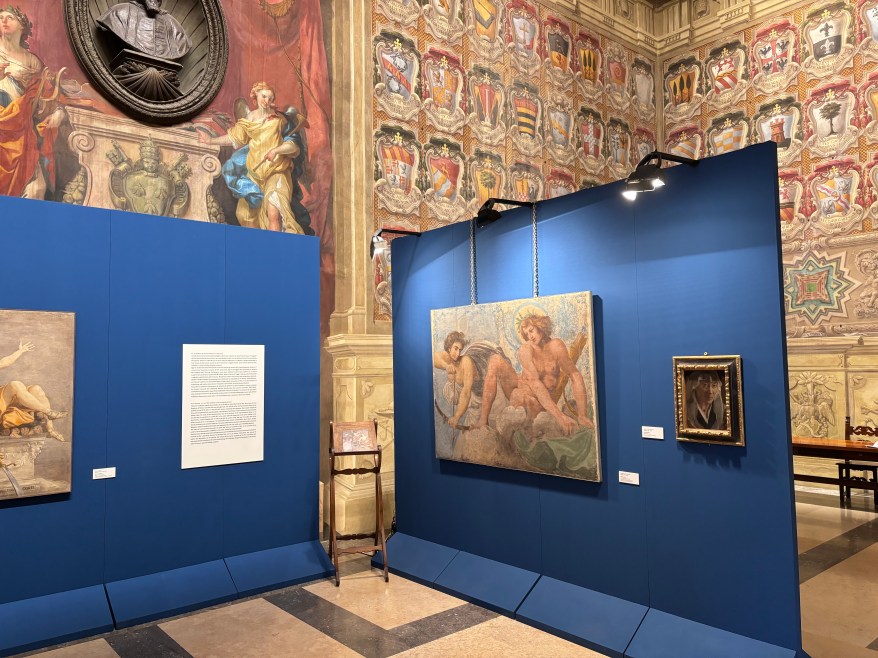
Ludovico e Annibale Carracci: Tesori d’Arte Antica a Bologna
🇮🇹Apre al pubblico la nuova mostra Ludovico e Annibale Carracci. Storie antiche per due camini bolognesi nella collezione Michelangelo Poletti, a cura di Angelo Mazza, presentata dai Musei Civici d’Arte Antica del Settore Musei Civici Bologna… 🇬🇧The new Ludovico and Annibale Carracci exhibition opens to the public. Ancient stories for two Bolognese fireplaces in the…
-
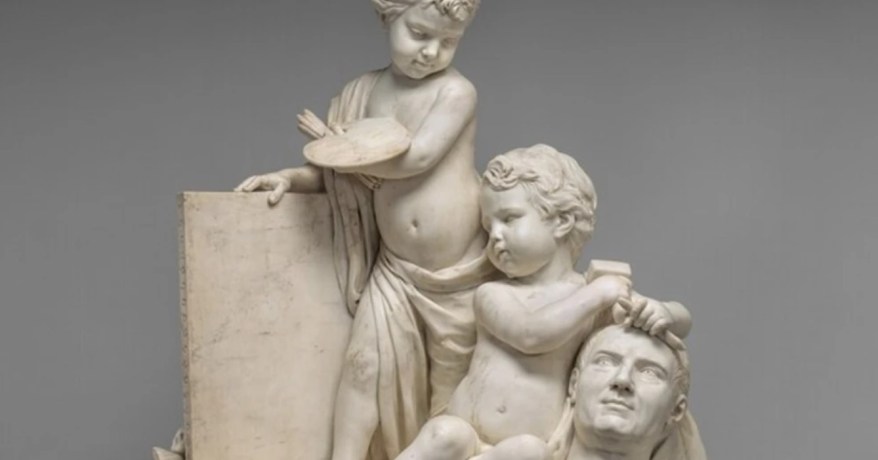
La Scultura del giorno: l’Allegoria della Pittura e della Scultura di Tassaert
🇮🇹La scultura del giorno che vi propongo oggi è l’Allegoria della Pittura e della Scultura realizzata da Jean-Pierre-Antoine Tassaert tra il 1774 e il 1778… 🇬🇧The sculpture of the day that I propose to you today is the Allegory of Painting and Sculpture created by Jean-Pierre-Antoine Tassaert between 1774 and 1778…
-

Restauro e Conservazione del Cartone dell’Epifania al British Museum: Tutti i Dettagli
🇮🇹Il cartone dell’Epifania è stato sottoposto a un delicato intervento di restauro prima di essere esposto nella mostra “Michelangelo: the last decades” del British Museum. Quali sono stati i vari passaggi dell’intevento conservativo e da chi sono stati eseguiti? Sedetevi comodi che ve lo racconto… 🇬🇧The Epiphany cartoon underwent a delicate restoration before being exhibited…

